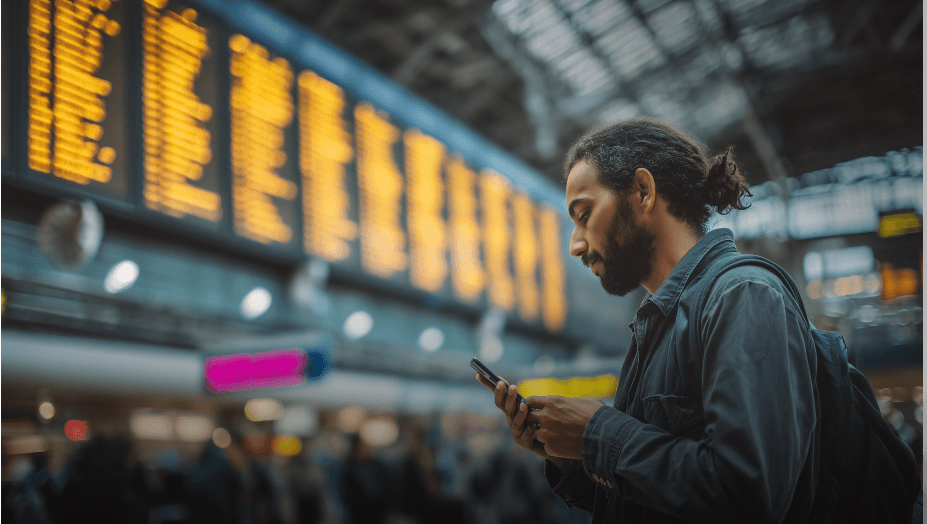
For online merchants selling digital products on Android, payments have always been closely controlled by Google. Until very recently, Google Play payment methods were the only option, and that meant accepting the rules and fees that came with them.
In 2025, the picture is starting to change. EU and UK regulations have forced Google to open up their ecosystems to competition. That means merchants can now add their own processors like Noda (or others) alongside Google Play Billing. But this does not mean a free choice. You still have to keep Google’s system in place, and Google still takes a service fee.
This guide explains how Android app payment methods work, which payment options on Android are supported through Google Play, how much they cost, and what the new rules mean for your business.
Key takeaways:
|
What Google Play Billing Offers?
When a user pays for digital content in an Android app, the purchase is processed through Google Play Billing. This has been the default system for years. The payment options available depend on the user’s country, but typically include:
- Debit and credit cards such as Visa, Mastercard and American Express
- PayPal
- Carrier billing with operators like Vodafone and O2
- Google Play gift cards and Play balance
- Play Points balance
For merchants, the costs are significant. The standard service fee is 30% on each transaction. Smaller developers can benefit from a reduced 15% on the first $1 million in annual revenue, and subscriptions drop to 15% after 12 months.
Many e-commerce merchants and app developers have criticised this model as restrictive and expensive. Until 2024, there was no way around it, and every Android app selling digital goods in Europe had to use Google Play Billing. Those selling non-digital goods, however, could use third-party PSPs even before 2024 – examples include clothing, books, and electronics. The recent changes, however, broadened the rules, allowing third-party PSPs to be used for selling digital goods, such as software, apps, e-books and music files.
Why The Rules Changed
The turning point came with antitrust regulation. In the EU, the Digital Markets Act (DMA) took effect in 2024, forcing “gatekeepers” like Google to allow fair competition. For the first time, app developers were permitted to add external payment processors to their payment gateway.
In the UK, the Competition and Markets Authority (CMA) ran a similar investigation and secured commitments from Google in 2025.
Before these changes, Google completely prohibited the use of external PSPs, except for selling non-digital goods. Now the company is required to allow them for all purchases. However, the set conditions still allow Google to keep part of the revenue flowing back to the platform.
How Alternative Billing Works In Practice
In Europe, there are three main routes:
- EEA-only Billing: Apps can rely only on an external PSP. Google still charges a reduced service fee of 27%.
- External Offers: Apps can link out to an external website for purchases. Google charges a mix of acquisition and ongoing fees between 12 and 27%.
- User Choice Billing: At checkout, users can pick between Google Play Billing or a third-party provider. Google reduces its service fee by 4% (30 becomes 26).
In the UK, only User Choice Billing is available for now. This means you must show both Google Play Billing and your chosen provider side by side.
While merchants now have options, they cannot completely remove Google from the picture. The policy ensures that Google continues to take a cut, even if you use an external PSP. Please be advised that the specific fees may vary depending on the country of interest. You can check it on the Google Support Website.
What The New Rules Mean For Merchants
For app developers in Europe and the UK, the landscape is more flexible but also more complex. You can now integrate your own Android payment gateway, but you still need to manage Google’s reporting rules and fees.
The benefits of this are clear:
- More control over the checkout experience.
- Broader payment options on Android, including open bankin payments and other methods.
- Potential cost savings compared with card networks
However, there are also some challenges that are worth noting:
- Google still charges service fees.
- Some Play Store features may not apply when you use external billing.
- Extra compliance and reporting work is required.
For years, Android developers had no choice but to use Google Play Billing. Now, thanks to EU and UK regulation, the door has opened to alternative Android payment methods. Google still charges service fees, but merchants can finally integrate their own providers alongside Google’s system.
This is where open banking solutions like Noda come in. By offering instant settlement, lower costs and wide coverage across Europe, Noda provides merchants with a way to handle Android app payment methods more efficiently while staying compliant with Google’s rules.
Why Choose Noda For Your Android App Payments?
If you decide to expand beyond Google’s default system, choosing the right partner is critical. This is where Noda can help. As an open banking provider designed for high-volume flows, Noda brings clear advantages for merchants exploring Android app payment methods.
- Broad Bank Connectivity: Noda connects with over 2,000+ banks in 28 European countries, offering your app wide coverage through a single integration.
- Low Transaction Fees: With pricing from just 0.1%, Noda helps you protect your margins.
- Instant Settlement: Payments settle directly into your bank account within seconds, without card scheme delays or intermediaries.
- Multi-Rail Payments: Offer customers more choice by combining open banking with cards and wallets in one streamlined flow.
- Hands-On Support: A dedicated manager will help you integrate smoothly and keep things running without friction.
By using Noda as part of your Android payment methods, you can reduce reliance on costly card networks while meeting Google’s new requirements.
FAQs
Is Android Pay the same as Google Pay?
No. Android Pay was discontinued in 2018 and merged into Google Pay. Today, Google Pay handles online and in-app transactions, while Google Wallet stores your cards and passes.
How to pay on Android apps?
Most digital purchases are billed through Google Play Billing using cards, PayPal, or other supported options. In the EU and UK, some apps now also allow alternative PSPs like Noda.
What payment methods are supported on Google Play?
Google Play supports major debit and credit cards, PayPal, carrier billing, Play gift cards, and Play Points. Options vary by country.
Are in-app payments restricted on Android?
Yes. Digital in-app purchases must use Google Play Billing, but in the EU and UK new laws mean you can now also offer an external PSP. You cannot yet remove Google’s system entirely outside the EEA.
How to manage payment methods on Android?
Users can manage their saved payment options in the Play Store app under Payments and subscriptions. From there, they can add or remove cards, link PayPal, or redeem gift cards.
Latest from Noda

GoCardless Review 2025: What Merchants Need to Know

Alternative Payment Methods UK: Your Complete Guide to Modern Payment Solutions

Plaid Review for Merchants: Data, Payments, Pros & Cons, and More


